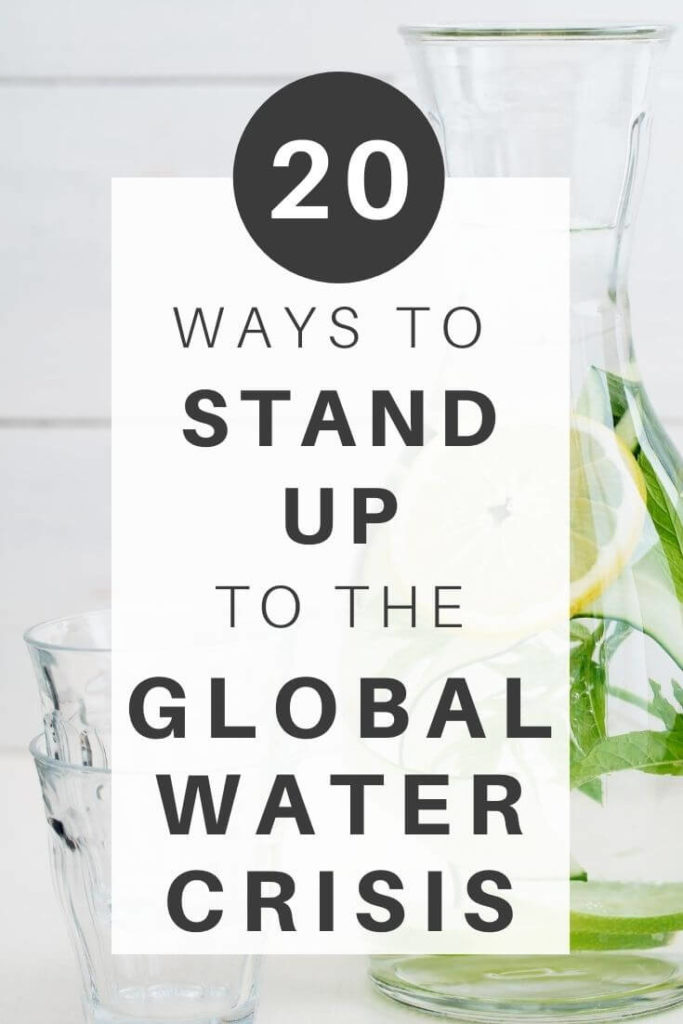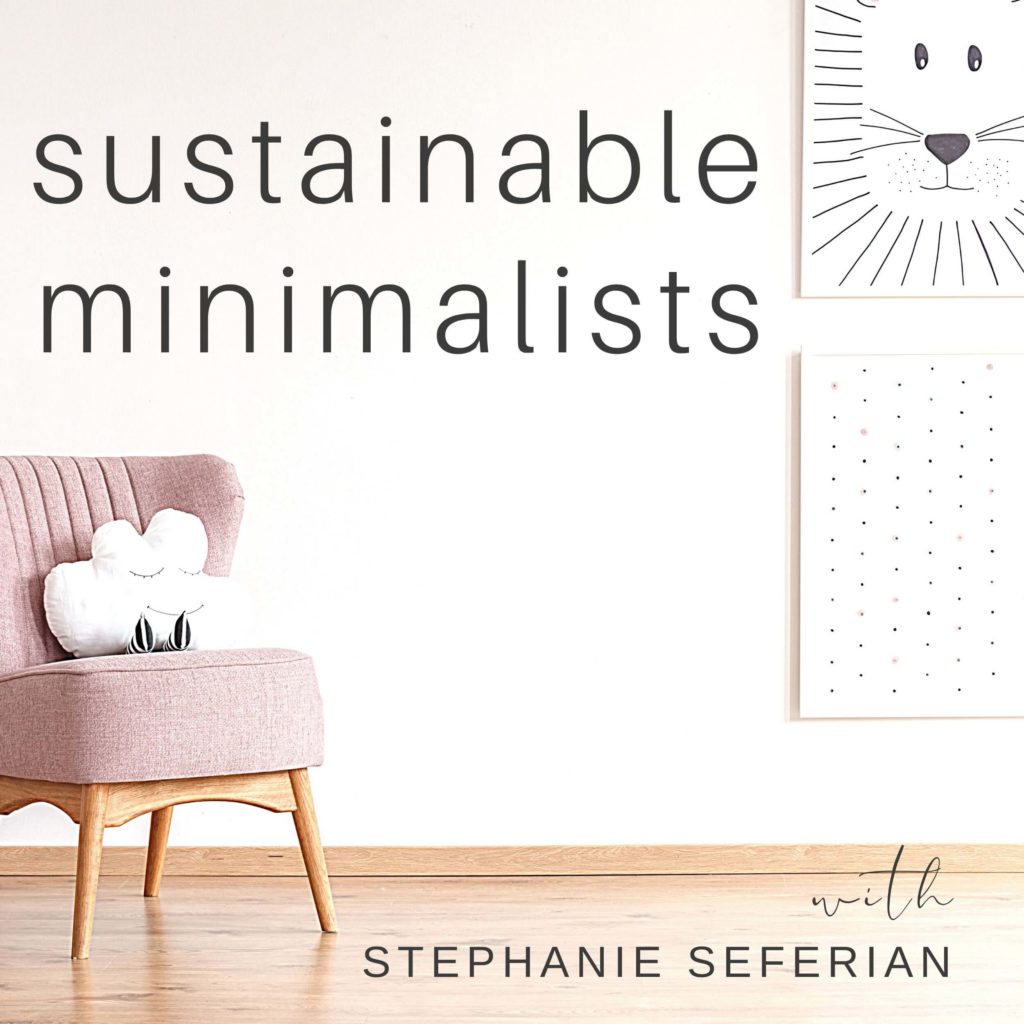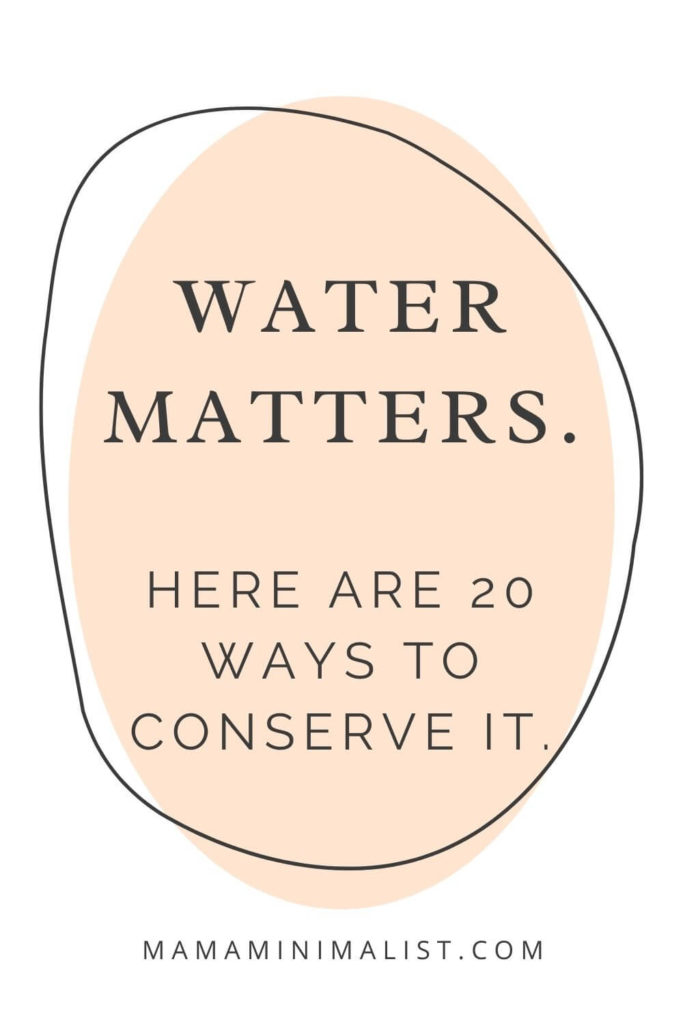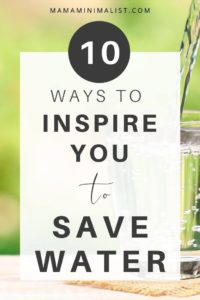Water Matters. Here’s How to Conserve it.
Here’s How to Conserve Water.
There’s a global freshwater crisis happening, and we can help by conserving water within our own homes.
You may have been fortunate to enjoy clean, running water all your life; it is no surprise, then, that you may overlook this vital resource.
But water is vital to sustain life. Have you thought about where the water in your faucets comes from?
The reality is this. Access to clean, fresh water is a privilege, and it’s running out.
Why conserve water? 3 Common misconceptions
There are 3 common misconceptions about water, including the following:
#1: “How on Earth is there a water crisis? Isn’t the planet made up of 71-percent water?”
It’s true: Earth’s surface is 71% water. But 96% of it is salt water which isn’t fit for consumption or irrigation.
1.7 % is in lakes, rivers, streams, and soil, and another 1.7% is in polar ice caps and glaciers (which are melting). Less than point .01% is in the atmosphere.
The bottom line: Only 2% of Earth’s water is consumable, and only 1% is actually accessible.
You can find The Sustainable Minimalists podcast wherever you listen to podcasts.
Apple Podcasts | Google Podcasts | Spotify | Stitcher
Common Misconception #2: “Doesn’t water get recycled via the water cycle?”
The short answer? Yes.
Thanks to evaporation, transpiration, and condensation, water does indeed get recycled.
But even though water is recycled, humans are consuming water faster than Earth can replenish it.
Droughts and heatwaves threaten our water supply, as do pollution and excessive fertilizer use, which make existing freshwater unsuitable for drinking and irrigation.
Worse, thanks to increased population demands, increased agriculture, and increased industry construction and manufacturing, the planet’s water needs continue to grow.
Said another way, water scarcity is being driven by two things happening at once: we are using more water, and simultaneously we are depleting usable freshwater resources.
Hence, the global freshwater crisis.
Common misconception #3: “I’ve never been without water. It doesn’t seem like there’s a water crisis to me.”
Dozens of international cities stand to face severe water shortages in the coming decades. Here are just a few:
Jakarta, Indonesia:
In Indonesia, 70 percent of the waterways are polluted and therefore render freshwater non-consumable.
Cape Town, South Africa:
In 2017, dam levels of the Western Cape region fell to just 13.5% capacity and the city’s 4 million people were in danger of running out of water. Conservation efforts plus an increase in rainfall ended the crisis, but 2 years later, Cape Town still has not received water security, as their dams hover around just 50% capacity.
Melbourne Australia:
Melbourne survived a 12 year drought from 1997 to 2009, but ecologists believe their water supply remains in danger due to deforestation that’s causing the collapse of forests in Victoria’s central highlands, as most of the city’s water supply is located there.
London, United Kingdom:
A weakening infrastructure and an increasing population threatens London’s water supply. England is on track to run out of water within the next 25 years.
[Related: 5 Ways to Stand Up for Environmental Justice.]
Home water facts
1. Take a bath lately?
It takes about 70 gallons of water to fill a bathtub.
2. How about flush the toilet?
A single toilet flush is close to 3.5 gallons, or 20 gallons per day per person on average.
3. Do you water your lawn?
Nearly 60% of a person’s household water footprint can go toward lawn and garden maintenance.
4. Do you have a pool?
The average pool takes 22,000 gallons of water to fill, and if you don’t cover it, hundreds of gallons of water per month can be lost due to evaporation.
5. Have you bought a new T-shirt lately?
It takes 100 gallons of water to grow a single pound of cotton.
6. Washed your car lately?
150 gallons of water.
7. Drink a cup of coffee lately?
A single cup of coffee requires 55 gallons of water, with most of that water being used to grow the coffee beans.
8. Have you done laundry today?
About 22 percent of the water your home uses likely goes toward doing the laundry.
9. Eat a hamburger?
One quarter pounder is worth more than 30 average American showers. And chicken? A single serving of poultry uses 90 gallon of water to produce.
10. Fill your car with gas?
One gallon of gas requires 13 gallons of water to produce.
Why conserve water?
When you commit to conserving water, you save more than just water.
In order for fresh, clean water to come out of your faucet, it requires energy in the form of lab tests, treatment, sanitation, irrigation supply centers, cooling towers, and a host of other energy and resources.
Conserving water also means conserving energy and saving money.
Practical Ways to Conserve Water:
– Repair your dripping faucet.
14% of water in the average home is lost to leaks.
Leaky faucets are easy to spot; leaky toilets are harder. a good trick for spotting a leaky toilet is to put in 3 to 5 drops of food coloring in the toilet before bed then check on it in the morning. If the food coloring is gone or is severely diluted by morning, you know you have a leaky toilet.
– Use only one drinking glass per person per day.
– Cook with what’s leftover in a drinking glass.
– Reuse plates and dishes throughout the day.
– Use phosphate-free dishwasher detergents that do not pollute waterways.
– Drink less coffee and buy fewer avocados and almonds, as these crops are water-intensive. Eat less meat, too.
– Adjust your washing machine’s settings to make sure it designates the proper load size.
– Commit to smaller baths with less water for your kids. (Use a washable crayon on the side of the tub to track progress.)
Alternately, bring back the good, old-fashioned sponge bath.
– If your water takes a long time to heat up, place a bucket at the bottom of the shower to collect the cold water. Then use that to water plants or drink or cook with.
– Love a long, hot shower? Set a timer and put a number to the length of your shower. Get a baseline and then start reducing from that baseline. Over time, aim for a 5 minute shower.
– Wash dishes less. Use the dishwasher and make sure that dishwasher is filled to capacity before running it. No longer run a half-full dishwasher. And when you’re filling it, rinse your dishes LESS or not at all.
Stay in-the-know!
Sign up for monthly eco-friendly inspiration.





